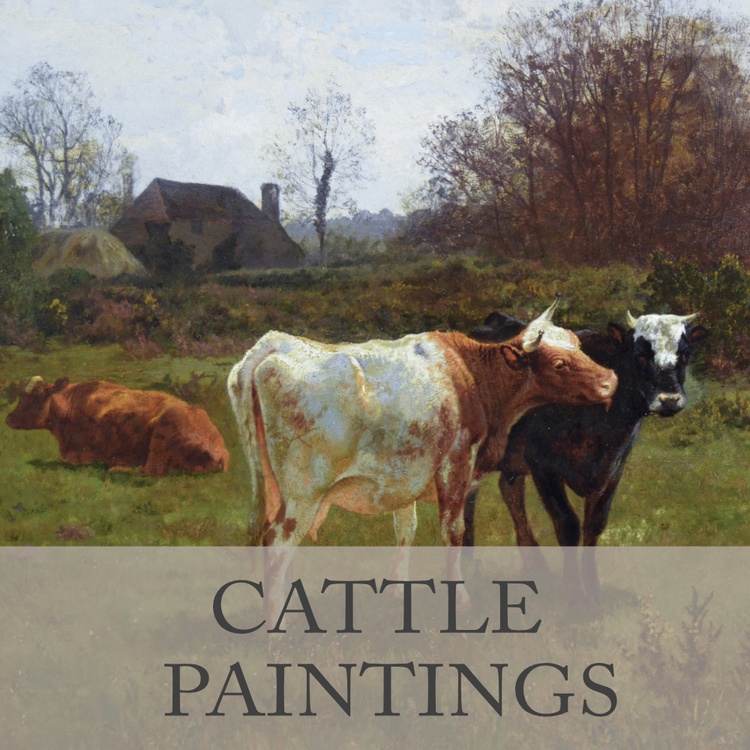News
Why cattle paintings remain so enduringly popular

Why cattle paintings remain so enduringly popularÖ
Cows have long been represented in art; from cave paintings depicting wild cattle to domesticated cows in ancient Egyptian figurative art. They often had a dual practical and spiritual role in the ancient world and were also symbols of strength. As farming developed, owning cattle became an indicator of economic wealth and remains so in many parts of the world. Centuries of breeding has given rise to cows that are for the most part, gentle giants, although the same cannot be said for the bulls.
Whilst cattle have been and continue to be an important part of many economies, the depiction of them in paintings, particularly landscapes only began to emerge during the past few hundred years. After the Renaissance, when artists began to receive commissions from patrons outside the religious orders, landscapes started to become the subject of the painting and soon gained in popularity. They would often contain animals but more often than not were idealised scenes of nature. It wasnít until the 17th century that cattle began to be featured in a much stronger way when the Dutch landscape painters used them to reflect the national pride in their dairy industry. The cow became a symbol of their prosperity and inspired artists, particularly from Britain with its similar economy, to start painting landscape scenes with cattle.
However, it wasnít until later that cattle paintings truly found a place in the nationís heart. In the 18th century and early 19th century, Englandís enclosures acts restricted land to the owner so that it ceased to be common land for communal use. It ended the ancient system of arable farming in open fields and meant that fewer farmers were needed to work the same land. The result left many villagers without land and grazing rights and large numbers of people subsequently left rural areas to work in cities during the Industrial Revolution. With less people in the countryside, nostalgia over what had been lost lead to a romanticising of rural England. John Constableís landscapes which depicted scenes of rural life had a huge influence on artists of the time. Because of the loss of the rural population, cows and other animals such as sheep became much loved features of the landscape instead. This combined with an appetite during the Victorian era for landscape paintings that reflected the nostalgia for the countryside, particularly those with cattle increased. Artists such as Thomas Sidney Cooper made their name by capitalising on the growing demand. The appreciation for pastoral scenes has never really diminished, in fact has probably gained more popularity in light of all the changes and fast pace of the modern world.
© Benton Fine Art
Click here for cattle paintings.


